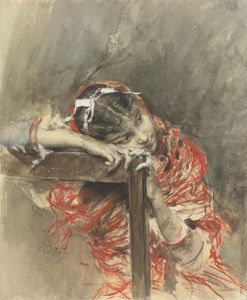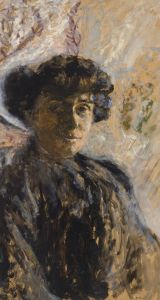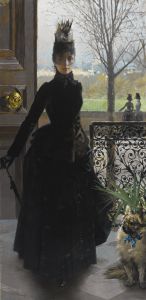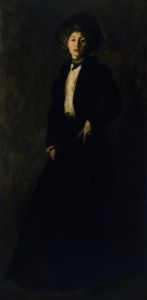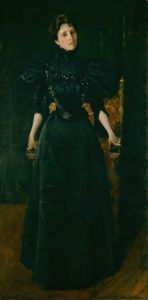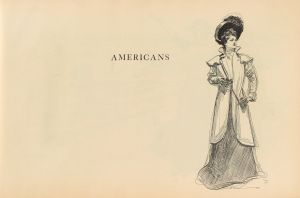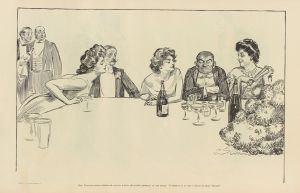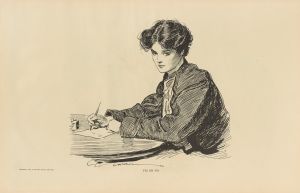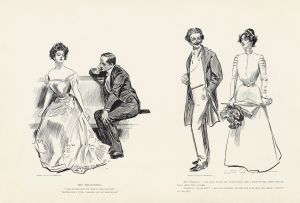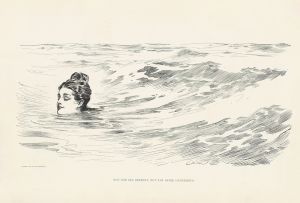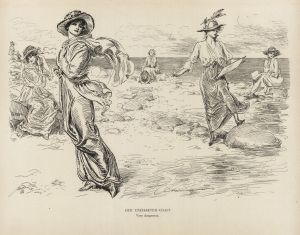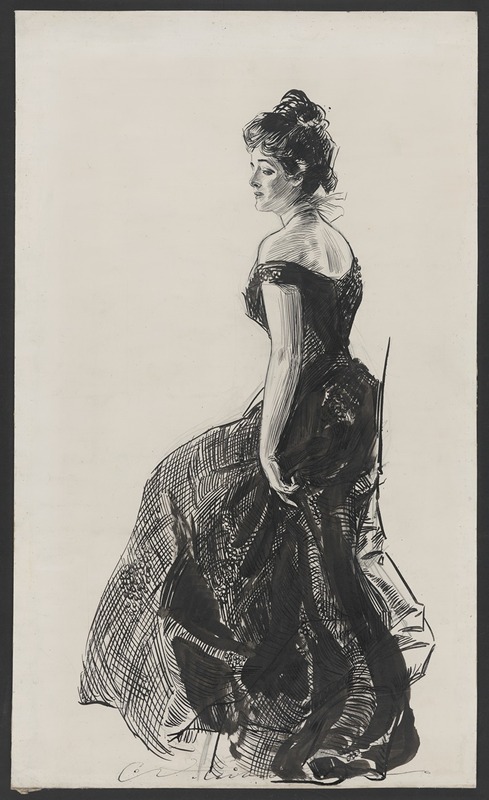
Woman in black evening dress
A hand-painted replica of Charles Dana Gibson’s masterpiece Woman in black evening dress, meticulously crafted by professional artists to capture the true essence of the original. Each piece is created with museum-quality canvas and rare mineral pigments, carefully painted by experienced artists with delicate brushstrokes and rich, layered colors to perfectly recreate the texture of the original artwork. Unlike machine-printed reproductions, this hand-painted version brings the painting to life, infused with the artist’s emotions and skill in every stroke. Whether for personal collection or home decoration, it instantly elevates the artistic atmosphere of any space.
Charles Dana Gibson was an influential American illustrator, best known for creating the iconic "Gibson Girl," a representation of the idealized American woman at the turn of the 20th century. His illustrations were widely published in popular magazines of the time, such as Life, Scribner's, and Harper's, and they played a significant role in shaping the visual culture of the era. Among his many works, "Woman in Black Evening Dress" is one of the illustrations that exemplifies his style and thematic focus.
"Woman in Black Evening Dress" is a pen-and-ink drawing that showcases Gibson's skill in capturing the elegance and poise of his subjects. The illustration features a woman dressed in a sophisticated black evening gown, embodying the grace and confidence associated with the Gibson Girl. The black evening dress is depicted with intricate detailing, highlighting Gibson's ability to render textures and fabrics with precision. The woman's posture and expression convey a sense of self-assuredness and independence, characteristics that were central to the Gibson Girl archetype.
The Gibson Girl was not just a fashion icon but also a cultural symbol of the changing roles of women during the late 19th and early 20th centuries. She represented a new kind of femininity that was both fashionable and assertive, reflecting the growing social and economic opportunities available to women at the time. The Gibson Girl was often portrayed as being involved in various activities, from sports to social events, and she was depicted as being both beautiful and intelligent.
Gibson's illustrations, including "Woman in Black Evening Dress," were influential in popularizing this new image of womanhood. The Gibson Girl became a standard of beauty and style, influencing fashion and societal expectations. Her image was widely reproduced in advertisements, merchandise, and even inspired real-life fashion trends. The popularity of the Gibson Girl also coincided with the women's suffrage movement, and while Gibson's work was not explicitly political, it contributed to the broader cultural conversation about women's rights and roles.
Charles Dana Gibson's work, including "Woman in Black Evening Dress," remains significant in the study of American art and culture. His illustrations offer insight into the societal norms and aspirations of the time, and they continue to be appreciated for their artistic merit and historical value. The Gibson Girl, as depicted by Gibson, remains an enduring symbol of a pivotal era in American history, representing both the allure and the complexities of the changing landscape for women.
While specific details about the creation and publication of "Woman in Black Evening Dress" may not be extensively documented, the illustration is a testament to Gibson's enduring influence and the cultural impact of his work. His ability to capture the spirit of his time through the depiction of the Gibson Girl has left a lasting legacy in both the art world and popular culture.





